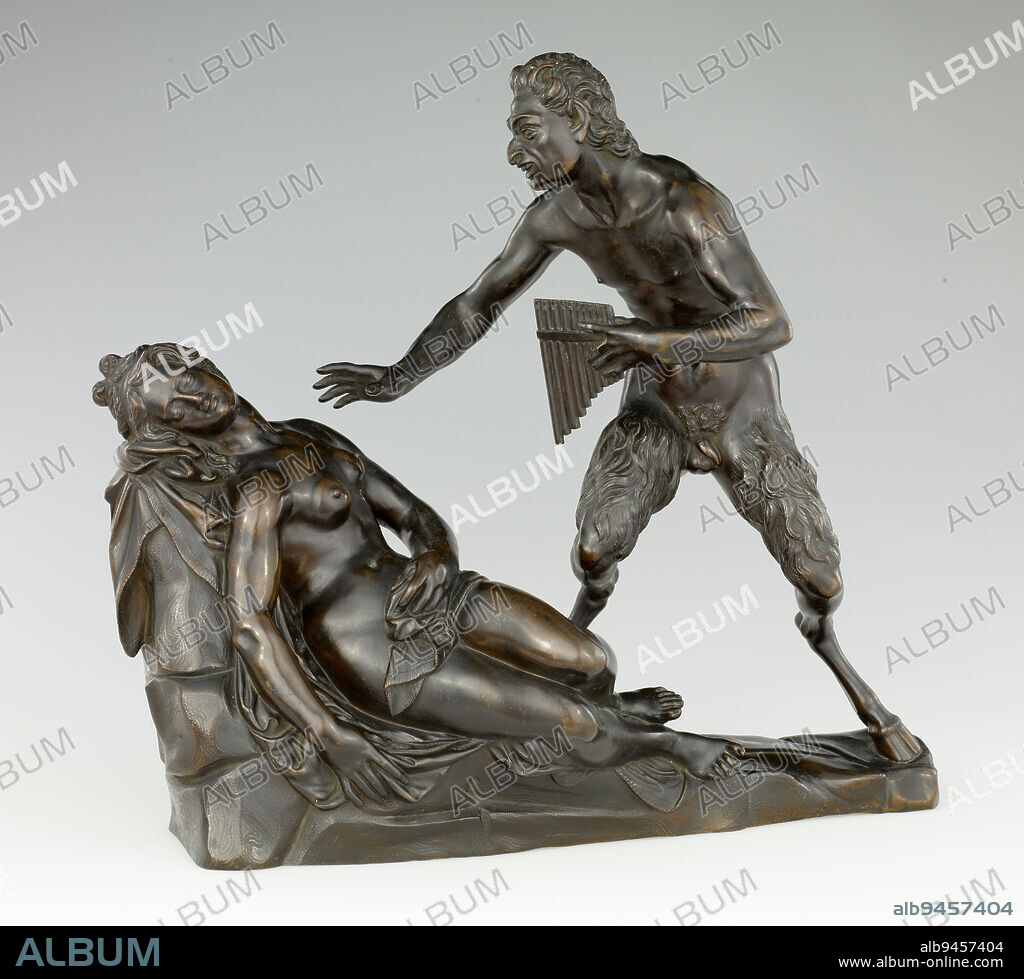alb9457404
Satyr and Nymph, 17th century, Ferdinando Tacca, 1577-after 1641, 14 1/4 x 15in. (36.2 x 38.1cm), Bronze, Italy, 17th century, A mostly nude nymph slumbers against a rock, while a half-man, half-goat Satyr reaches toward her. What are his intentions, and what happens next' In Renaissance and Baroque symbolism, the female figure often stands for the human soul, whereas the maleespecially when characterized by a Satyr or other hybrid animalsymbolizes the bodily forces of hunger, thirst, and sexual lust. This sculpture presents a pivotal, open-ended moment, and the viewer is left to imagine what follows. In the 1600s, this kind of artwork was used as a conversation piece that prompted intellectuals to ponder the meaning and the conclusion of the scene.

|
Ajouter à une autre Lightbox |
|
Ajouter à une autre Lightbox |



Avez-vous déjà un compte? S'identifier
Vous n'avez pas de compte ? S'inscrire
Acheter cette image

Légende:
Voir la traduction automatique
Satyr and Nymph, 17th century, Ferdinando Tacca, 1577-after 1641, 14 1/4 x 15in. (36.2 x 38.1cm), Bronze, Italy, 17th century, A mostly nude nymph slumbers against a rock, while a half-man, half-goat Satyr reaches toward her. What are his intentions, and what happens next' In Renaissance and Baroque symbolism, the female figure often stands for the human soul, whereas the maleespecially when characterized by a Satyr or other hybrid animalsymbolizes the bodily forces of hunger, thirst, and sexual lust. This sculpture presents a pivotal, open-ended moment, and the viewer is left to imagine what follows. In the 1600s, this kind of artwork was used as a conversation piece that prompted intellectuals to ponder the meaning and the conclusion of the scene.
Personnalités:
Crédit:
Album / quintlox
Autorisations:
Modèle: Non - Propriété: Non
Questions sur les droits?
Questions sur les droits?
Taille de l'image:
5802 x 5246 px | 87.1 MB
Taille d'impression:
49.1 x 44.4 cm | 19.3 x 17.5 in (300 dpi)
Mots clés:
 Pinterest
Pinterest Twitter
Twitter Facebook
Facebook Copier le lien
Copier le lien Email
Email
